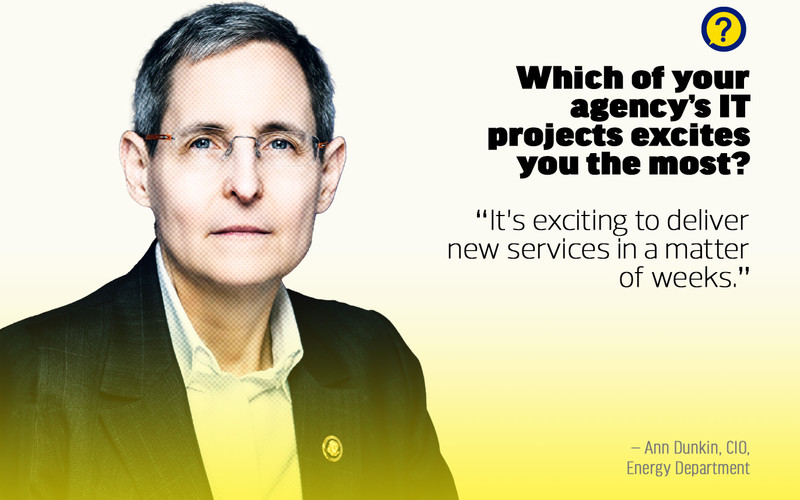FEDTECH: What motivated you to come back to the federal government?
Dunkin: I was asked to join the transition team. It’s a great opportunity to find out what it’s like to work on a campaign, because the hours are insane. You work 18 hours a day, seven days a week. One evening, at 10 or 11 p.m., I had just returned from the gym and was so excited about an idea that I sat down and worked right then. It was a moment of epiphany. There is something about work in government where we can really make a difference. I realized I was interested in coming back.
Jones: I was semiretired. I started my own business and was doing consulting and advisory work. I had a lot going on but going at my own pace. What made me come back? It’s getting a call to service. I’ve worked in government for 37 years. It’s a privilege to serve and to support the government in whatever capacity is meaningful, especially if your whole career has been in public service.
Hysen: I first came to the federal government when I helped create the U.S. Digital Service for President Obama. I knew then that I was going to be working in and around government. I started my career at Google, and we did great work. The private sector is doing some great things. But the impact that I and other technologists can bring to government missions is unparalleled.
When I left the Digital Service, I knew I was ending my first tour of duty. I fully expected to come back and was thrilled to be asked by President Biden to return to serve.
EXPLORE: Data protection and storage take priority across federal agencies.
FEDTECH: What IT upgrade will have the most immediate impact on end users or customers?
Hysen: It’s certainly not one, because DHS has such a large footprint. The President’s Management Agenda has laid out a major focus on improving customer experience, and that is something we’ve embraced.
One of DHS’ primary missions is how we share intelligence with state and local law enforcement officers. So, in coordination with our Intelligence and Analysis Office, we run a platform called the Homeland Security Information Network. We are about to roll out a mobile app that will allow our law enforcement partners to get direct access to actionable intelligence from DHS right from their phones. It’s improving the experience of getting critical information from the federal government, which ultimately keeps our communities safer.
Jones: The big thing we’ve set out to do is our Evolve acquisition, where we are redefining IT services. It’s the largest IDIQ (indefinite delivery/indefinite quantity) contract in our history, covering IT management, cloud and data center services, networking and telecommunications, service desk, user support, and application development. It will probably be a $12 billion to $14 billion contract for up to 10 years.
Within those categories, we will have a list of companies that will compete for that work. This will replace a vehicle called Vanguard and will give us the opportunity to really deliver in the areas where we need services.
Dunkin: What we’re doing to make a huge difference in the short term is to federate the instances of our productivity tools. Our users are mostly federal employees and researchers. DOE has a highly federated IT world, spanning 17 national labs plus additional sites and agencies. Right now, we have more than 20 instances and can’t see each other’s calendars or edit documents together. We want to work as a team, so pulling all the productivity tools together will make a real difference in how our employees, contractors and research partners experience working within DOE. We’re working through the larger offices first and will federate over time. It’s not a technically complex project. It’s having the conversations and getting the agreements done.
















